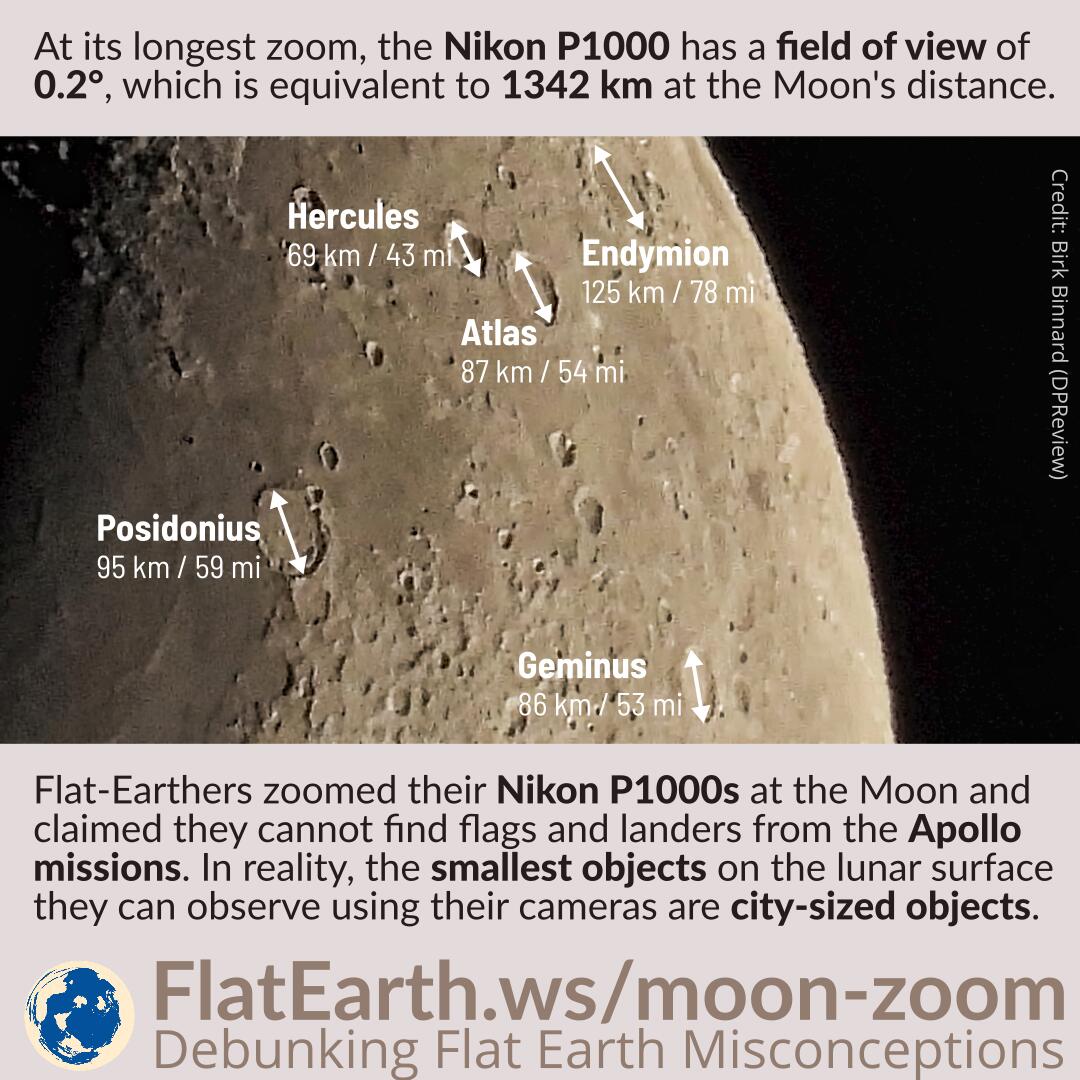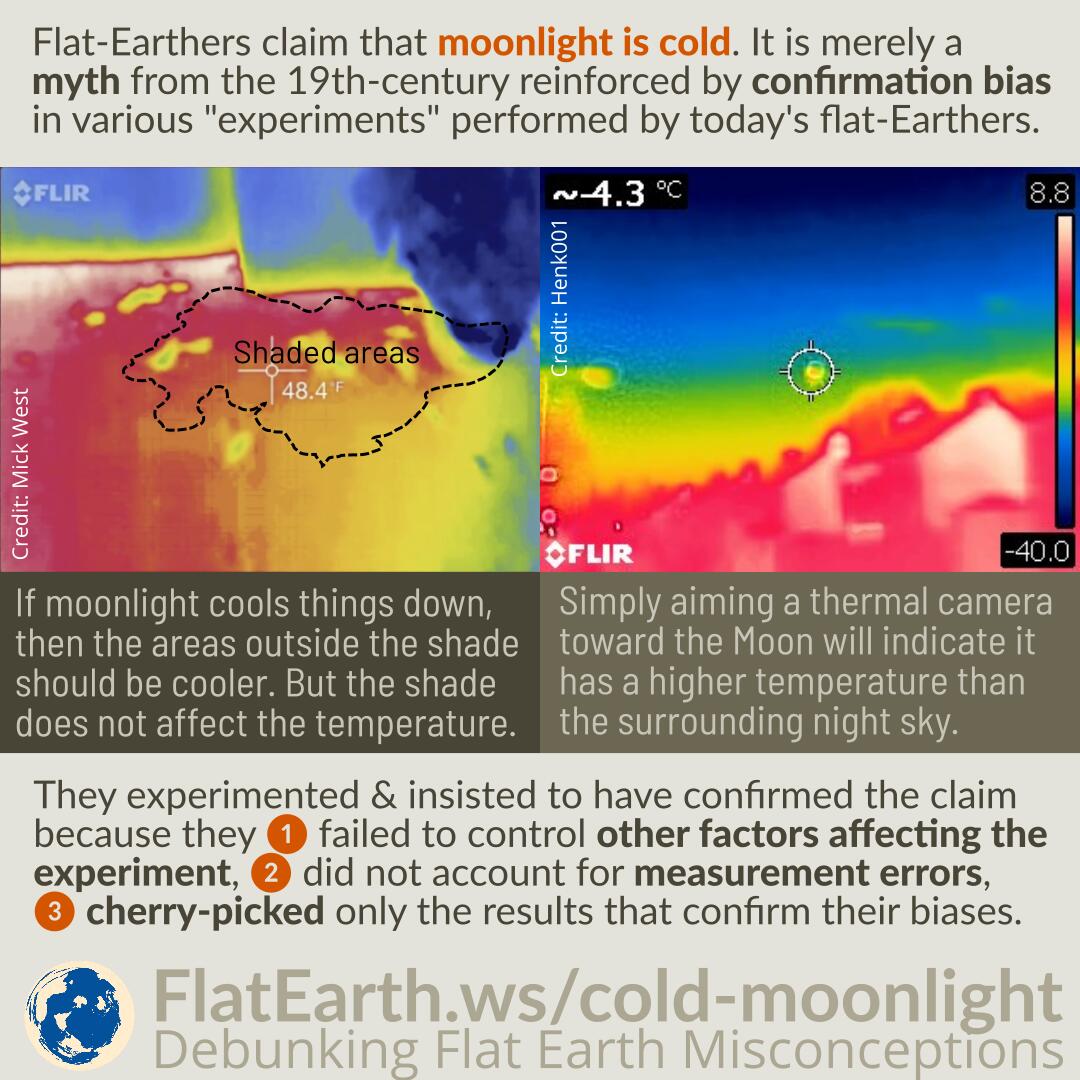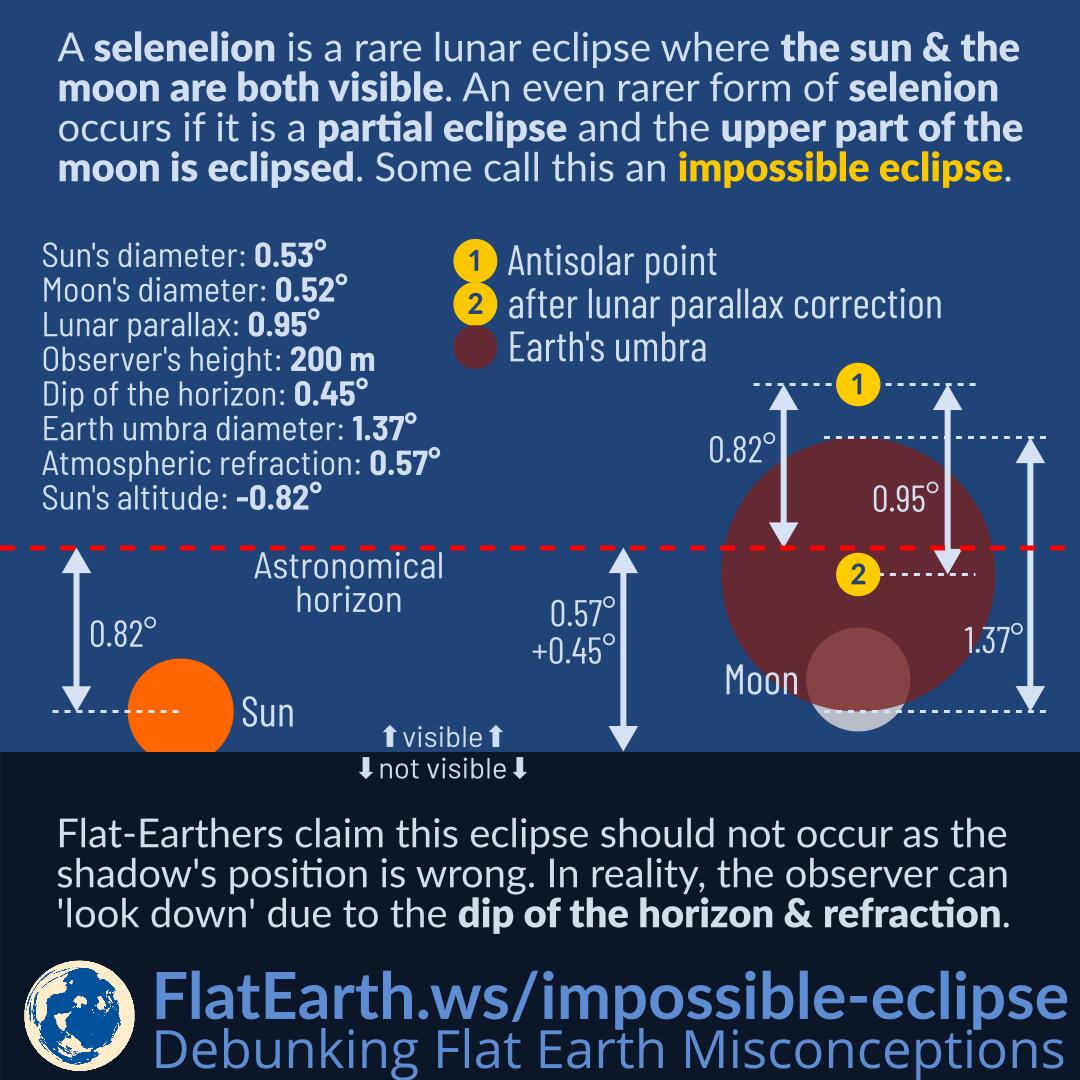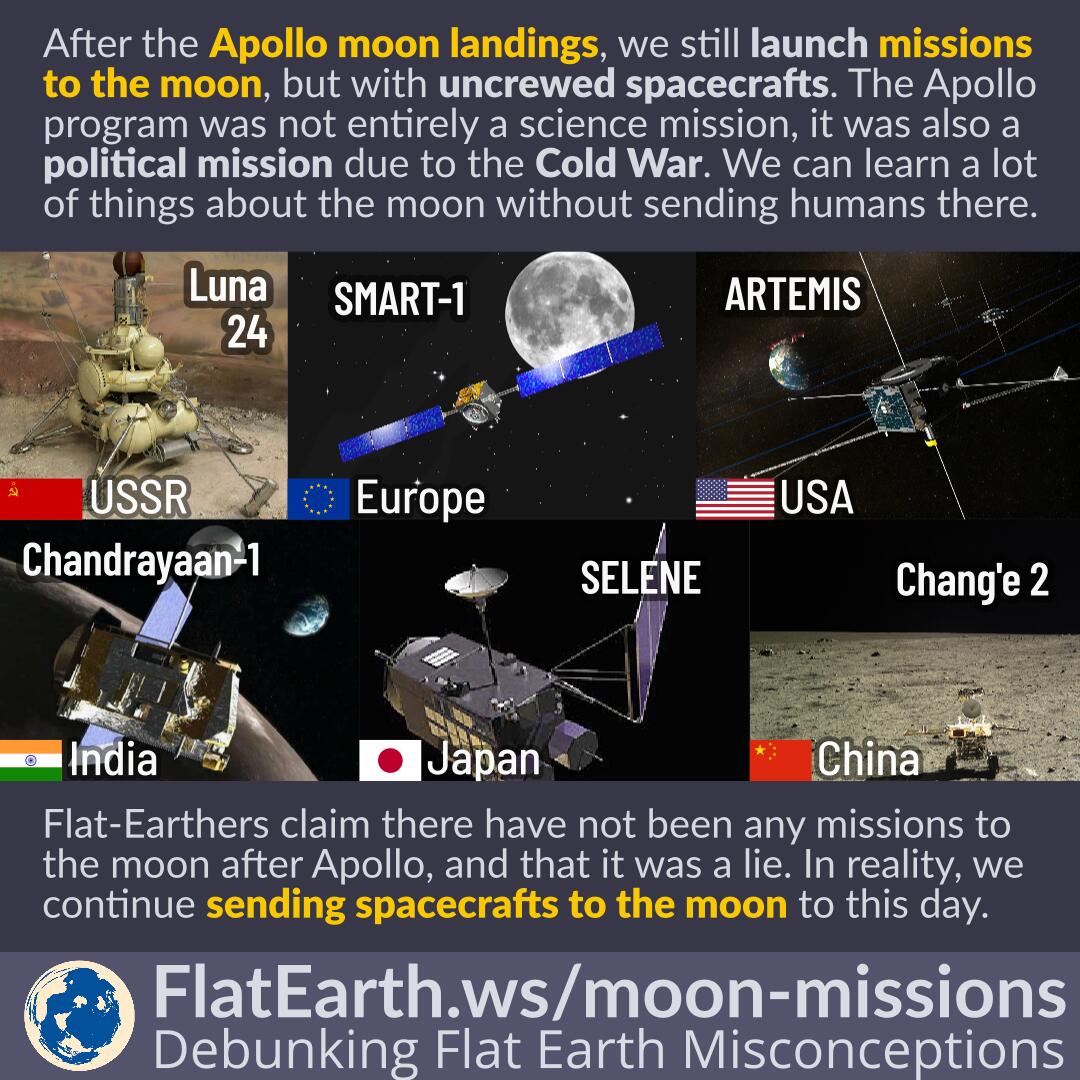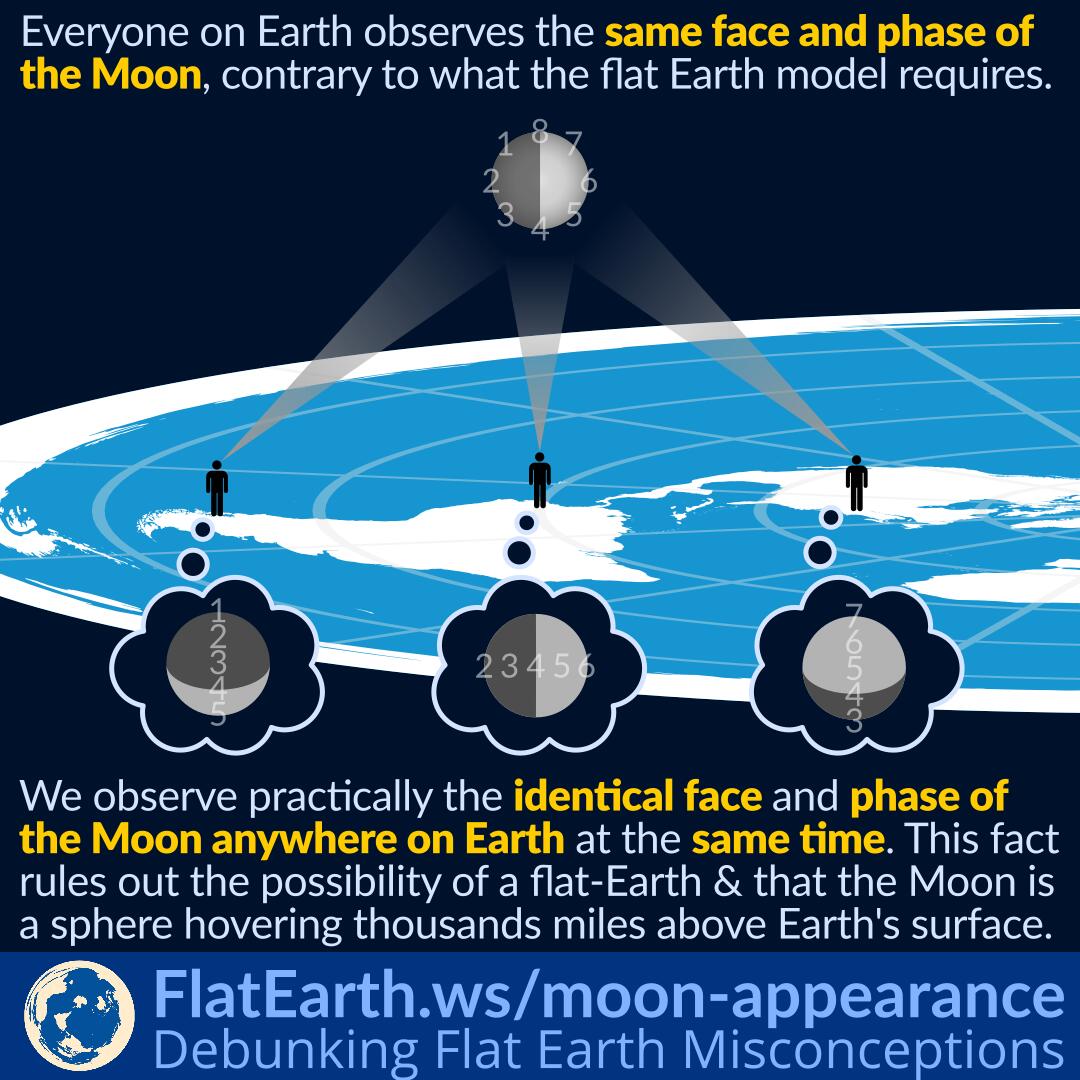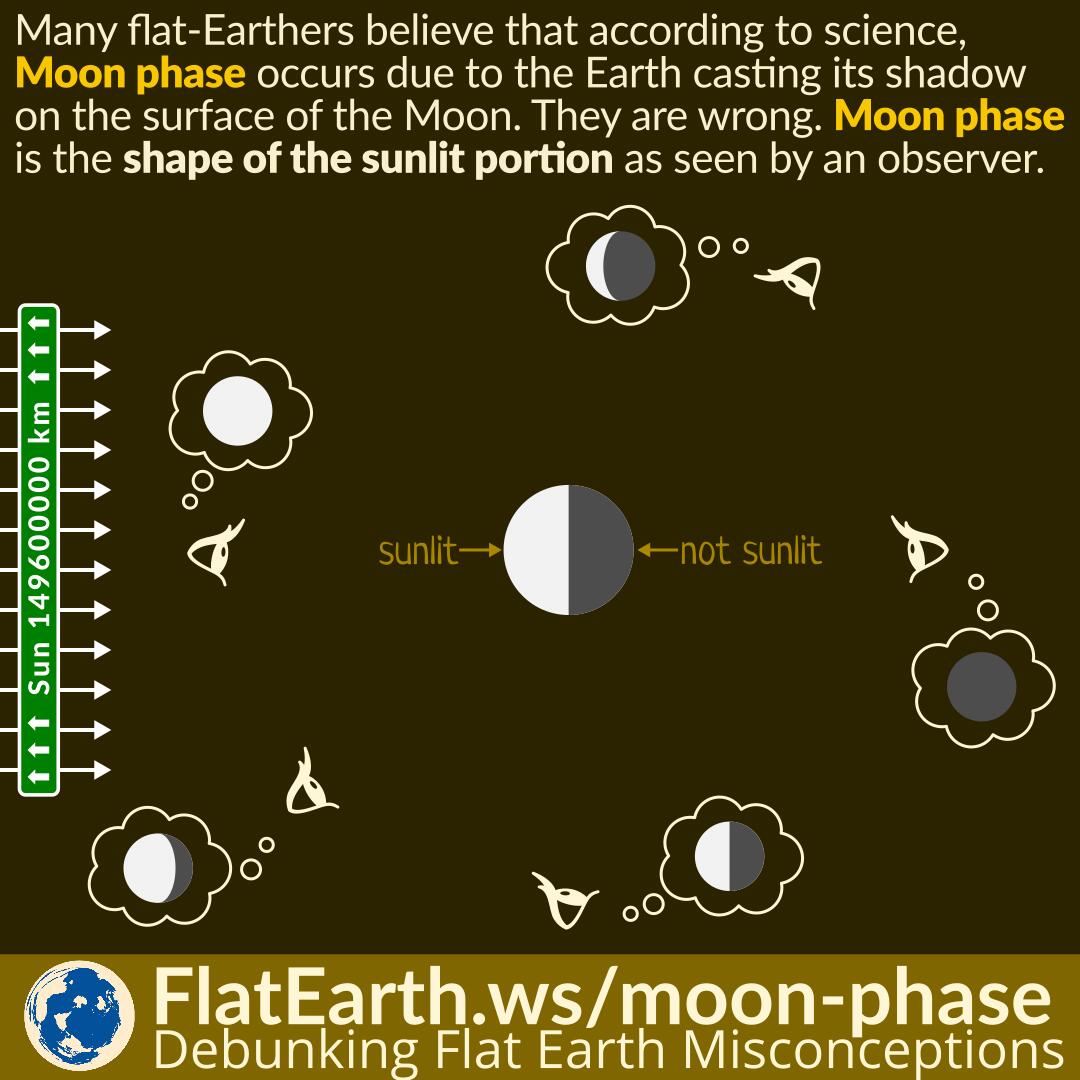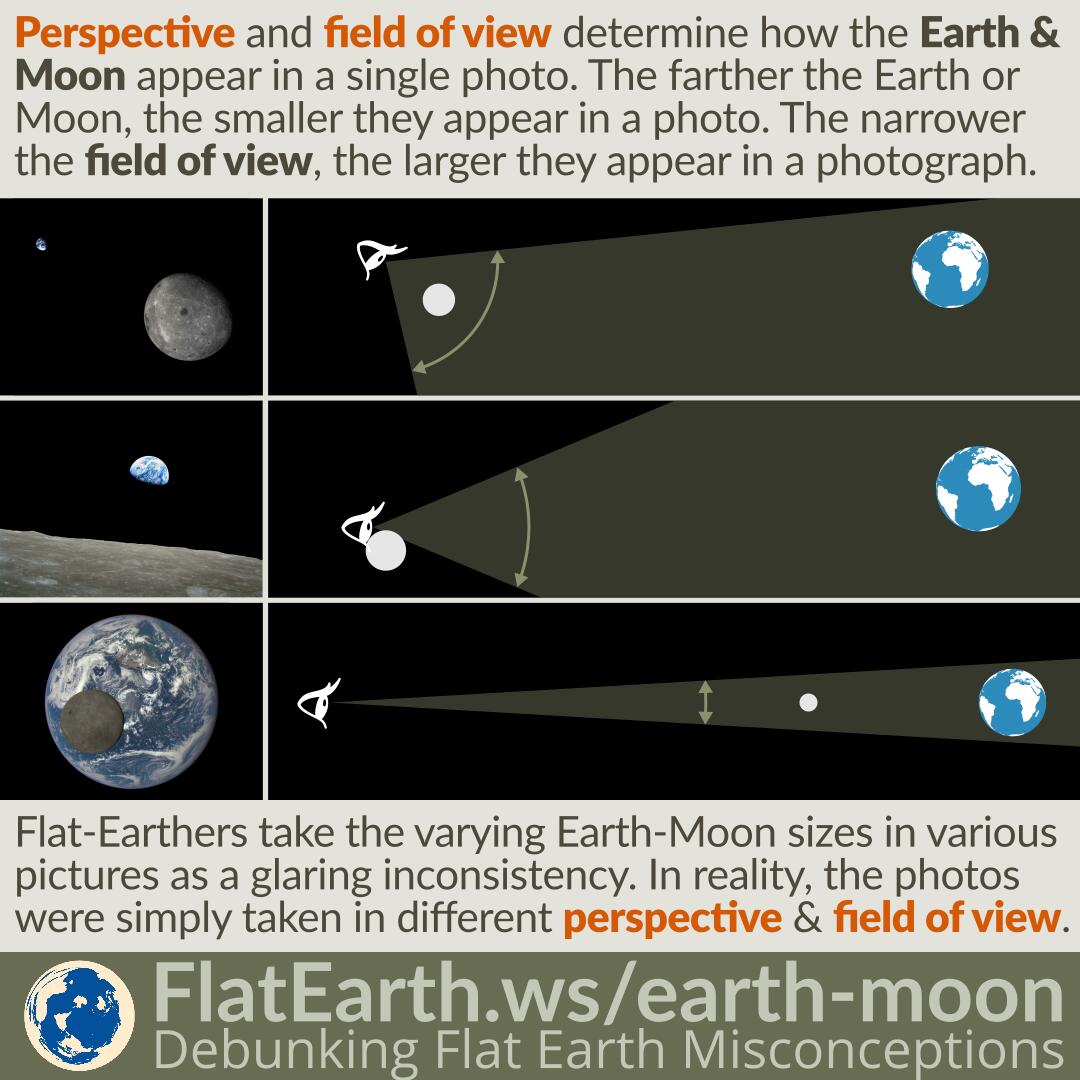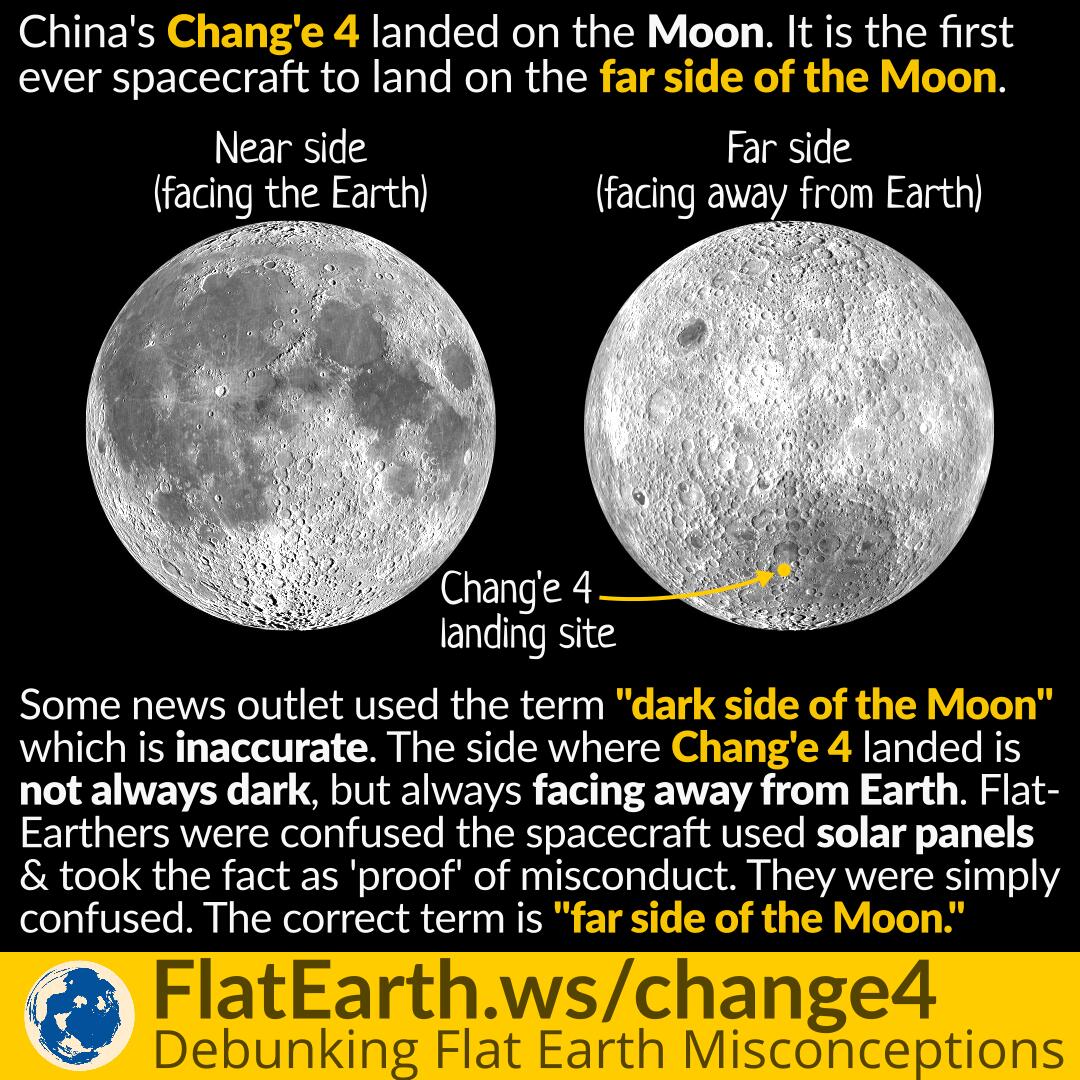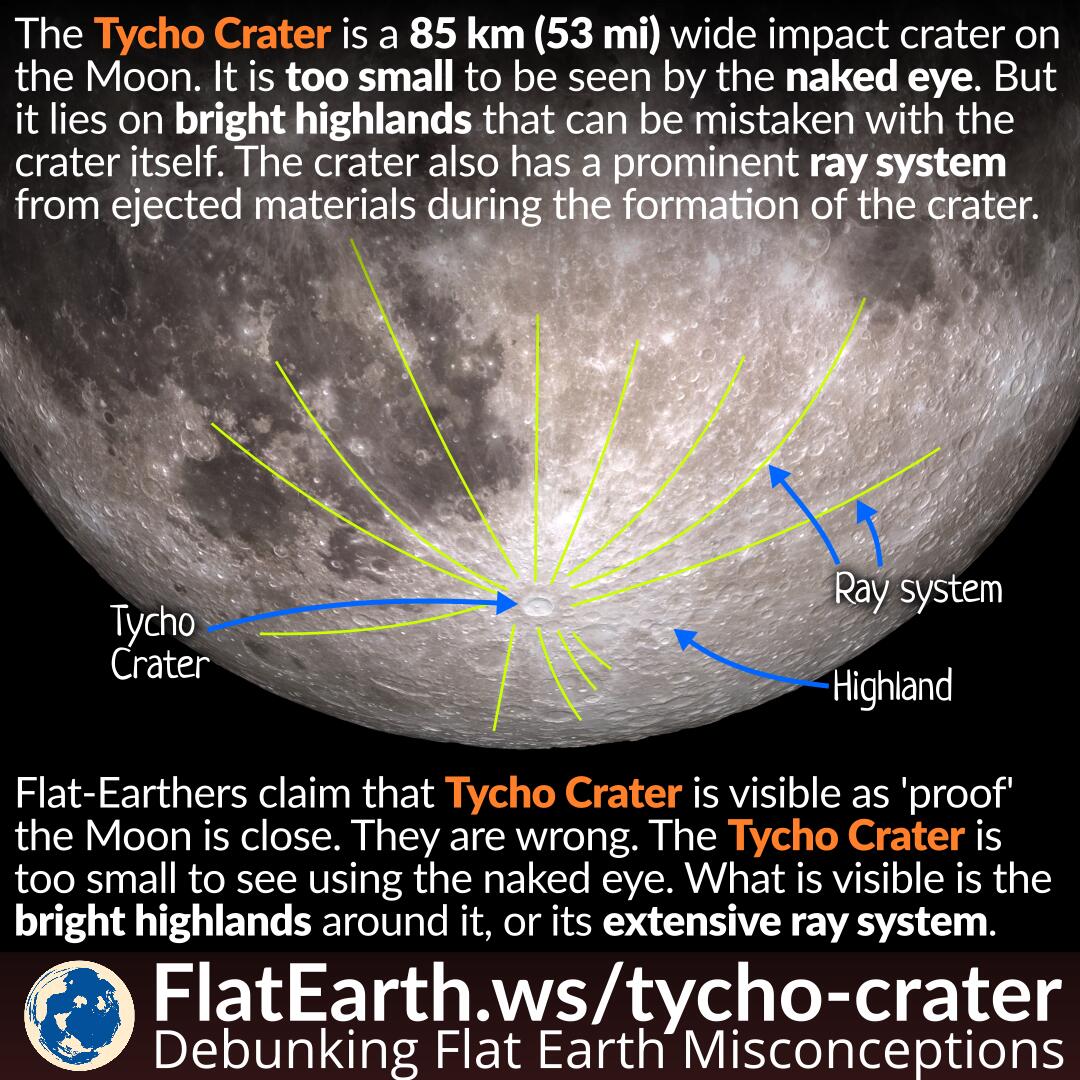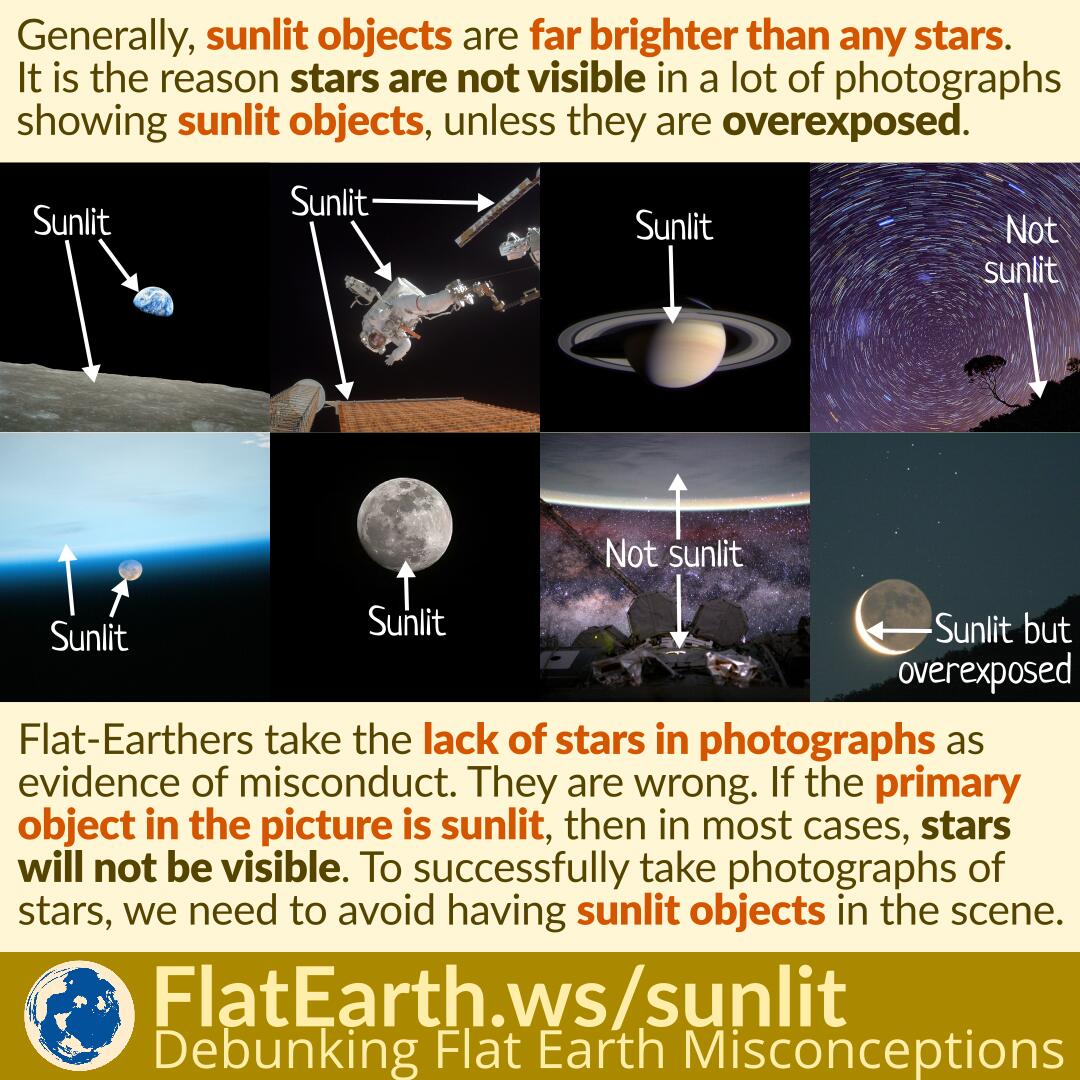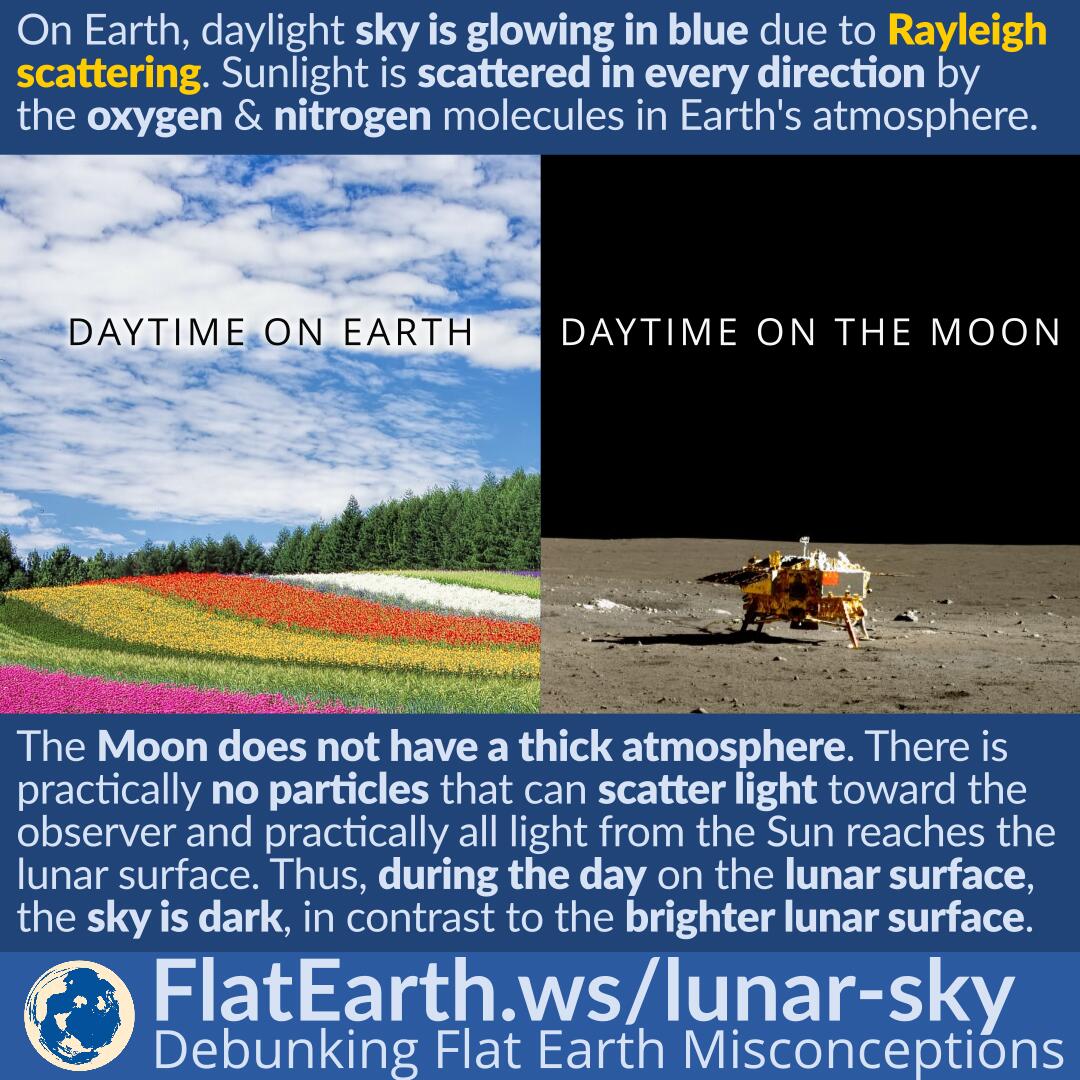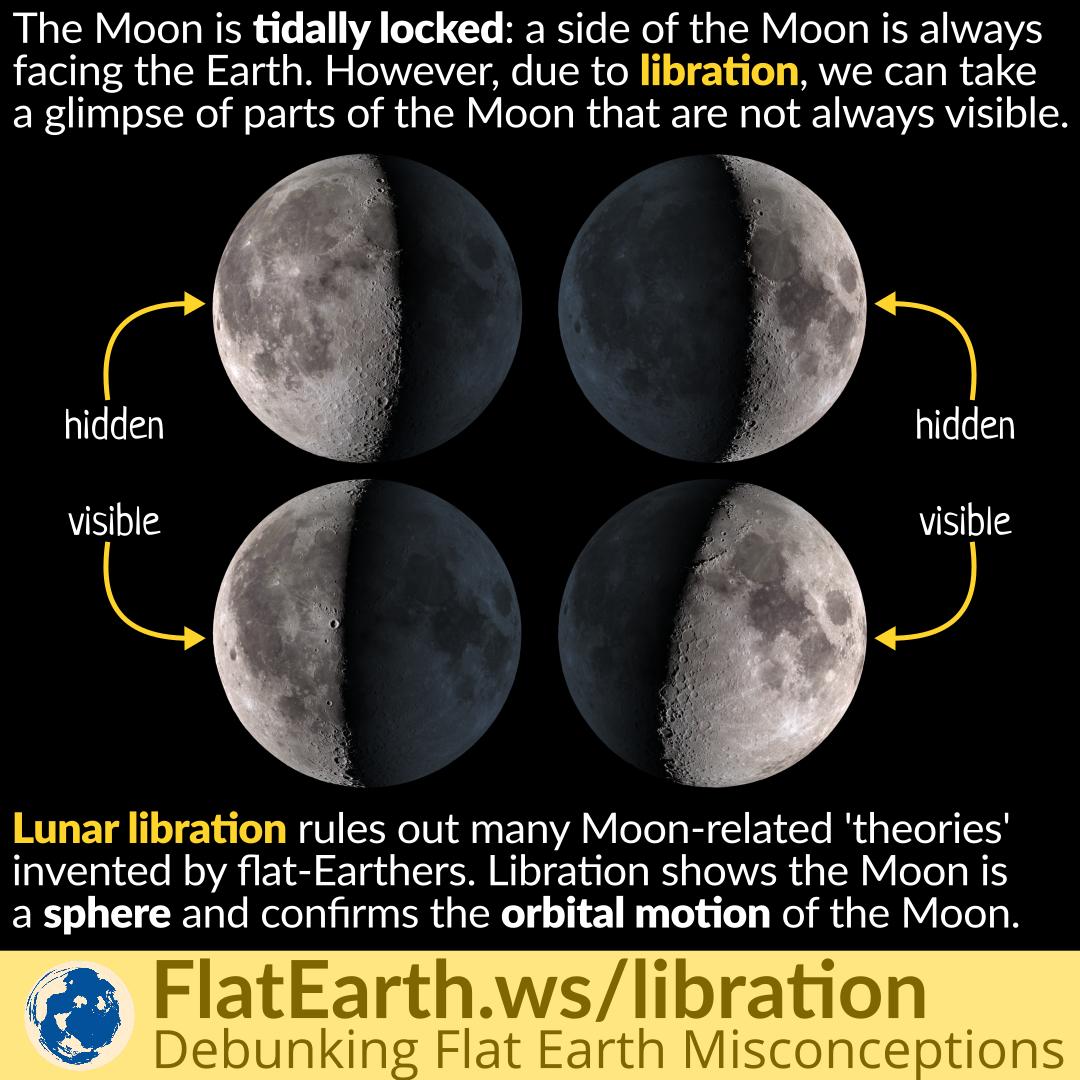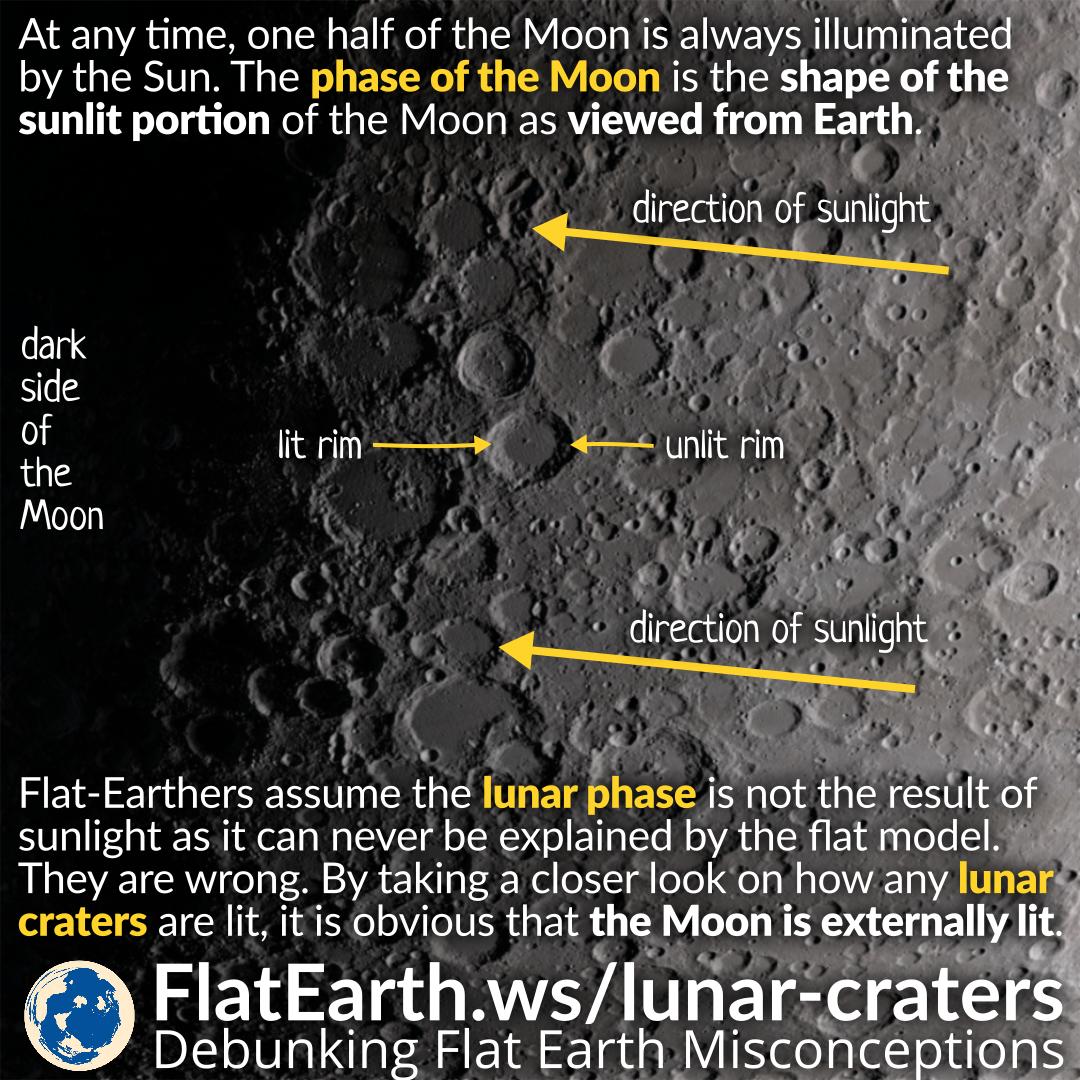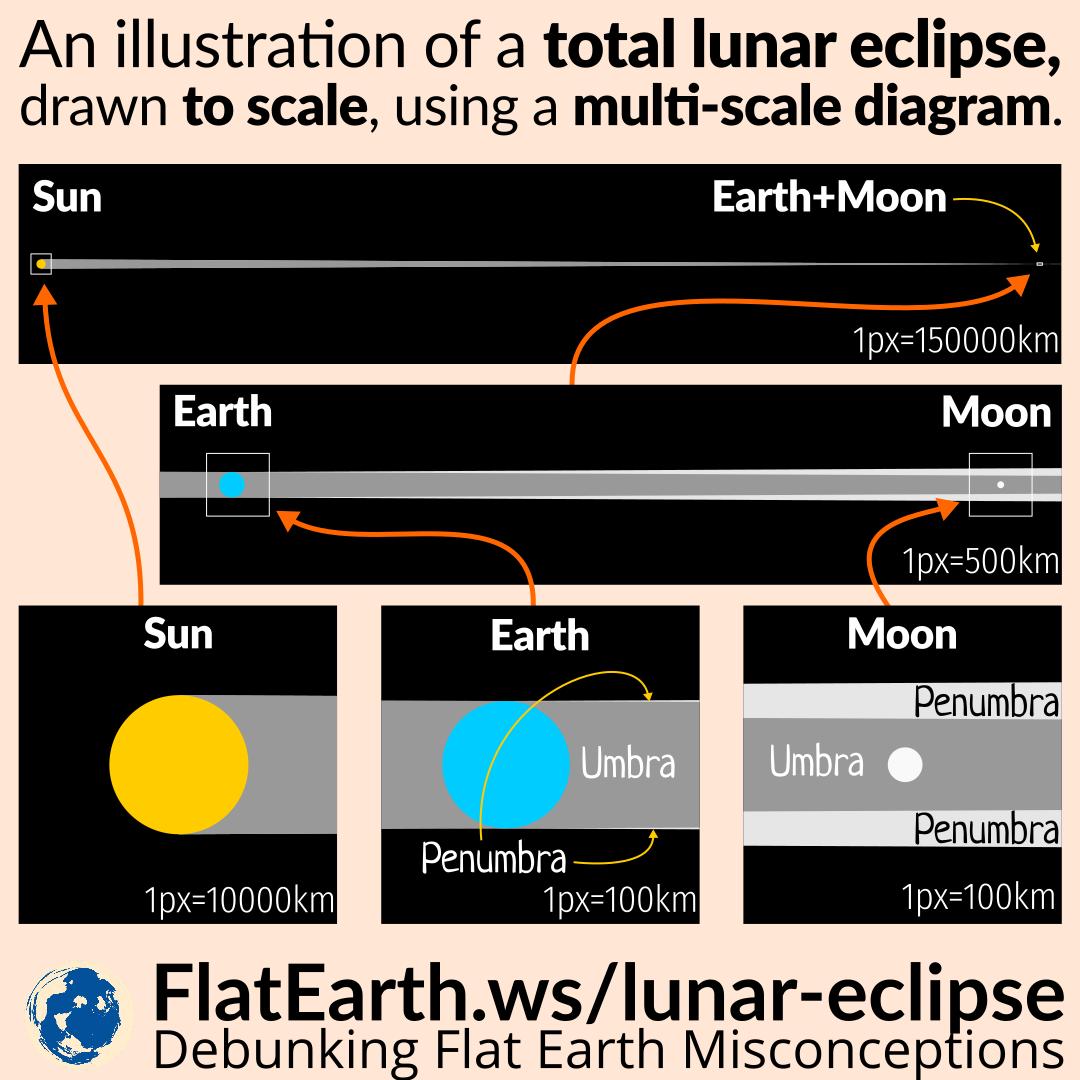China’s Chang’e 4 spacecraft has successfully landed on the Moon. It is the first ever spacecraft to land on the far side of the Moon.
Unfortunately, some news outlets used the term “dark side of the Moon” which is inaccurate. The side of the Moon where Chang’e 4 landed is not always dark, but instead always facing away from the Earth. That part of the Moon has the same day and night cycle like the side that is facing us and is not always dark.
Flat-Earthers were confused that the spacecraft use solar panels. If the side of the Moon is always dark, then it should be pointless to use solar panels. They took these facts as “proof” of some sort of misconduct. They were simply confused about the term some news outlets were using. The correct term is “far side of the Moon.”
Continue reading “Chang’e 4 and the Confusion About the Dark Side vs Far Side of the Moon”


